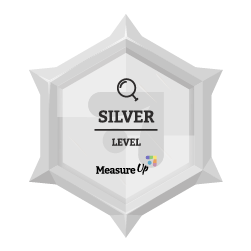Young Persons Wellbeing Programme
Mental health and resilience are increasingly recognised as important for both adults and young people, as well as having a lasting impact for young people through adulthood. The importance of young people’s wellbeing, as well as the gaps in current research, is also gaining increasing recognition. There is a recent campaign to implement a national wellbeing measurement programme to address the needs of children and young people across England.
In the UK, The Healthy Minds (HM) course was designed to enhance health-related quality of life outcomes for teenagers through evidence based life skills development. It consists of 14 modules (a total of 113 hours) based on established evidence and health education guidelines. The curriculum covers various topics, including social and emotional learning, relationships, and healthy living, tailored for students in UK secondary schools.
The course was delivered over the first four years of secondary school (ages 11 to 15), either replacing the one-hour weekly PSHE (Personal, Social, Health, and Economic) lessons or integrated into the school schedule at different times. It was taught by school staff, including teachers and learning support assistants, who received comprehensive training for each module. Healthy Minds was developed and implemented by the charity Bounce Forwards.
The trial commenced in September 2013 and concluded in July 2018. Schools were recruited in two phases: 13 schools in 2013 and an additional 21 in 2014. In the second phase, five control schools from the initial phase received the intervention, resulting in a total of 39 cohorts.
Key Value
A monetised social value of £1,400
Monetised wellbeing value of participation in a mental health and resilience ‘Healthy Minds Programme’ per student for one year.
The programme evaluation was conducted by the London School of Economics and Political Science (LSE) through the Centre for Economic Performance and LSE Health. This study assesses the impact of Healthy Minds (HM), an evidence-based life skills program integrated into the PSHE curriculum over four years in secondary schools. It aims to determine whether the course enhances teenagers’ well-being, strengthens their non-cognitive skills, and boosts resilience. The research follows a cluster randomized trial design, with randomization occurring at the school level.
The Healthy Minds evaluation report shows that the program has a positive impact on students’ life satisfaction. Specifically, students who took part in the program feel more satisfied with their lives compared to those who didn’t. On average, their life satisfaction is about 0.18 points higher, measured in standard deviation. This difference is statistically meaningful, with a high level of confidence (90%).
According to conference paper of the evaluation report, by the end of the fourth year of the course, life satisfaction scores (measured on a scale from 0 to 10) increased by 0.37 points. Therefore, this change in curriculum is worth 0.37 WELLBYs for four years. The monetised value of the impact is (0.37*£15,300)/4 = £1,415 for one person for one year in 2023 prices.
Monetised social value of Healthy Minds curriculum change is rounded to £1,400 per student per year in 2023 prices.
Local Needs Analysis Data Source
Before using this MeasureUp value, we encourage you to assess the local need in relation to the activity or outcome.
Here is the most useful initial data source for assessing local need in relation to this value.
If you’re just starting out, start with Bronze first. The result of a Bronze measurement is just an estimate, but requires the least effort; whereas Silver, Gold and Gold+ give more accurate results but require more effort.
Each level has an effort to accuracy indicator, choose the one that’s right for you.
Bronze
Effort
Accuracy
Monetised value:
At Bronze level estimate the number of students who participated in a wellbeing and resilience programme similar to the Healthy Minds programme over the course of a year and times this by the headline proxy value.
Example
Assume that a wellbeing and resilience programme is piloted in 3 schools in Manchester over a year:
A total of 90 students will participate in the programme.
Total monetised social value of the programme: 90 x £1400 = £126,000
Silver
Effort
Accuracy
Monetised value:
At Silver level we should be looking to improve our understanding of the young people engaging in our programme.

The Healthy Minds study recorded:
- Percentage of pupils on free school meals (FSM)
- percentage of pupils with GCSE grades A*-C
- Whether the school was single sex or mixed school
It could also be helpful to record demographic factors about the young people being supported, such as:
- gender,
- race,
- Geographical location of school
- Socio economic background indicators
- Extracurricular activities
The source report does not clearly adjust the outcome experience based on the differentiating factors. However, we still recommend for understanding more about the differences of those participating in your programme as this will give you a better understanding of who you are impacting and therefore improve your impact reporting.
Gold
Effort
Accuracy
Monetised value:
At Gold level you are looking to build on your silver estimations by engaging with the person or people affected.
Therefore, at the Gold level, you should survey users about their actual levels of change in outcomes and wellbeing rather than using the proxy value.
The Healthy Minds study was assessing the primary outcome of ‘Improving Health Related Quality of Life (HRQoL)’ using the measure of the general health dimension score from the CHQ-CF87 which is a self-report health measure designed for young people aged 10 to 18 (CHQ, 2013).
The survey is available via licence from sources such as Quality Metric.
The secondary measurement approach was the twelve sub-scales from the CHQ-CF87 scale. These subscales capture dimensions of HRQoL that represent aspects of physical health, emotional wellbeing and behaviour.
There are other assessment measures that relate to HRQoL including:
- the Short Mood and Feelings Questionnaire – available as free download with citation of authors of questionnaire,
- the life satisfaction ladder and
- the Child Anxiety Related Disorders questionnaire (SCARED) which is published through a lot of health-related organisations.
You could also consider other data gathering activities, including direct observation, or focus groups.
For more information please visit Gold: Surveys and measurements of actual results.
Support in developing your Gold survey approach is available through the Measure Up partners, so please do reach out to Impact, State of Life or PRD.
Gold+
Effort
Accuracy
Monetised value:
At the Gold+ level, you are building on your Gold value calculation by assessing the value against the counterfactual, or ‘what would have happened anyway’.
At the Gold+ level, you are building on your Gold value calculation by assessing the value against the counterfactual, or ‘what would have happened anyway’.
To do this you should identify a control group suitable to assess in line with your intervention, in order to more accurately attribute any changes to your intervention.
You could also consider any other discount or causality elements linked to your job creation activity.
Support in developing your Gold survey approach is available through the Measure Up partners, so please do reach out to Impact, State of Life or PRD.
| Value Type: | Activity |
What's this?
This is the type of value. Some values are outcomes, which means many different interventions might lead to them, others are specific interventions that have a set value. |
|---|---|---|
| UN SDG Categories: |
|
What's this?
The UN Sustainable Development Goals are global goals adopted in 2015 for all signed up nations to achieve for us to have a sustainable global future by 2030. There are 17 Goals that address the global challenges we face, including those related to poverty, inequality, climate change, environmental degradation, peace and justice. The Goals are all interconnected, and in order to leave no one behind, it is important that we achieve them all by 2030. |
| 2020 Social Value Models: |
|
What's this?
PPN 06/20 Taking account of social value in the award of central government contracts introduced the Central Government Social Value Model in 2020 which all Central Government contracting authorities must use in their in scope procurements. It consists of 5 themes, 8 policy outcomes, and 24 Model Award Criteria which outline key priority areas to achieve more social value. |
| 2025 Social Value Models: |
|
What's this?
|
Evidence
Measure Up focuses on empowering you to numerically measure the impact you’re having. We recommend that numeric reports are backed up with stories and other types of evidence to help illustrate, in human terms, the impact that’s being made on individuals.
We recommend seeking consent from participants in your intervention to collect and tell their story. This should include a little background on the participant, a summing up of life before the intervention, the human impact of the intervention, and the longer term (if known) impact on the person’s life outside of, and after, the intervention.
Providing photographs, audio recordings, video interviews or even artefacts from the intervention (for example, writing, paintings, music from creative interventions) can add more to the story, and convey the emotional impact of interventions more directly.
In some cases it’s appropriate to anonymise or abbreviate the personal information of case study participants. No story should be published or shared without the recorded consent of the individual(s) it concerns. Individuals continue to own the rights to their stories and if they request you stop sharing the story or making it available online you should do so promptly and without need for justification.

Feedback
MeasureUp is open, collaborative and transparent. If you have any suggestions or feedback on our pragmatic, recommended approach to measuring and valuing social value, including wellbeing, economic, and fiscal impact, and effects on our environment, please get in touch so we can share and discuss this at our next Advisory Group meeting.

More help
We want to empower anyone to perform and improve their impact measurement – without needing a degree in economics.
If you need any more help, or just someone to do the legwork for you we can help signpost you to software, training and consultancy to help you get to grips with the impact you’re having and value you are creating.

